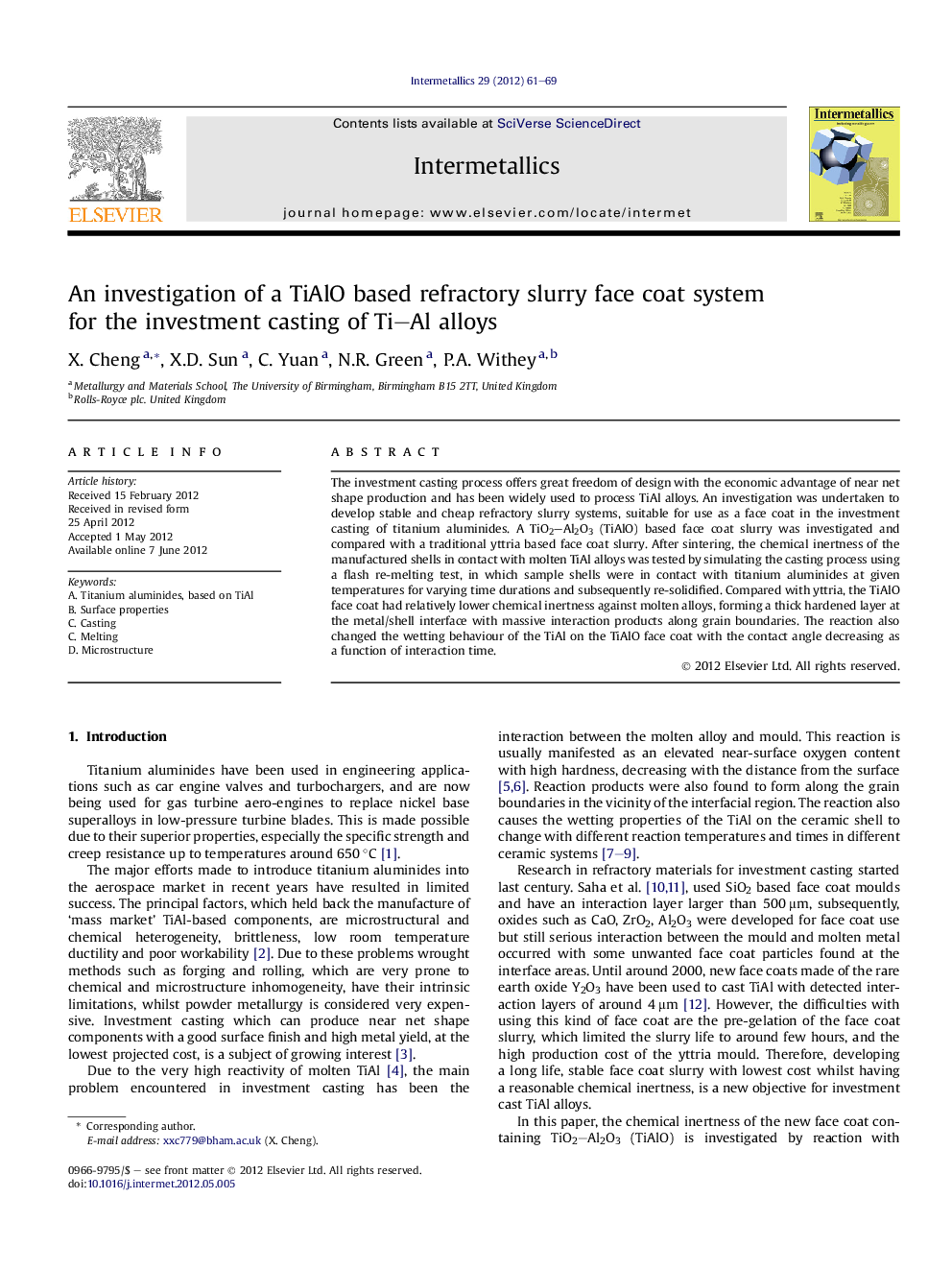| Article ID | Journal | Published Year | Pages | File Type |
|---|---|---|---|---|
| 1600432 | Intermetallics | 2012 | 9 Pages |
The investment casting process offers great freedom of design with the economic advantage of near net shape production and has been widely used to process TiAl alloys. An investigation was undertaken to develop stable and cheap refractory slurry systems, suitable for use as a face coat in the investment casting of titanium aluminides. A TiO2–Al2O3 (TiAlO) based face coat slurry was investigated and compared with a traditional yttria based face coat slurry. After sintering, the chemical inertness of the manufactured shells in contact with molten TiAl alloys was tested by simulating the casting process using a flash re-melting test, in which sample shells were in contact with titanium aluminides at given temperatures for varying time durations and subsequently re-solidified. Compared with yttria, the TiAlO face coat had relatively lower chemical inertness against molten alloys, forming a thick hardened layer at the metal/shell interface with massive interaction products along grain boundaries. The reaction also changed the wetting behaviour of the TiAl on the TiAlO face coat with the contact angle decreasing as a function of interaction time.
► The chemical inertness of the TiO2–Al2O3 and yttria face coat is measured using a sessile drop test. ► Compared to yttria, the TiO2–Al2O3 face coat has lower chemical inertness, easily give up oxygen, and forming a six-fold dendritic microstructure with high hardness at the interfacial area. ► Si from the backup coat is observed penetrated into the face coat and reacts with TiAl using TiO2–Al2O3 face coat system. ► Because of the interaction, TiAl alloy wetting behaviour on the TiO2–Al2O3 face coat is changed.
